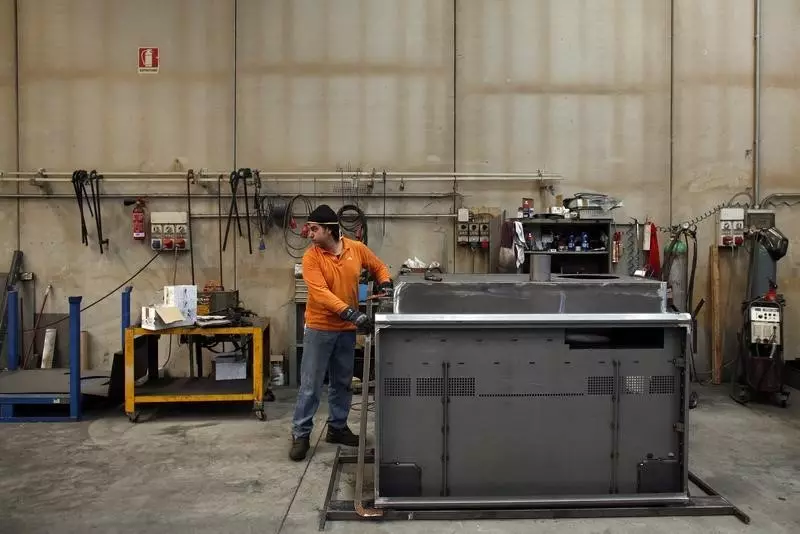The dream of a U.S. manufacturing renaissance has been a recurring topic in political discourse in recent years. Both the Trump and Biden administrations have proposed ambitious plans to revive the fading industrial strength that once defined the American economy. However, the reality paints a different picture. U.S. manufacturing has been on a gradual decline for decades, with the sector’s contribution to GDP plummeting from 23% in the early 1970s to around 10% today. While there have been modest increases in output in specific industries like semiconductors, the overall median output across sub-industries has declined by 20%, signaling a concentrated growth that fails to stimulate a broad-based recovery in manufacturing.
Despite claims of a manufacturing revival, the truth reveals a different story. The secular decline in manufacturing payrolls continues, with a mere 1.5 million manufacturing jobs gained since 2010, barely offsetting the 6 million jobs lost in the 2000s. With manufacturing jobs now making up just 8% of the total workforce, the sector’s long-term decline persists, casting doubts on the promises of an industrial resurgence. While there has been some uptick in manufacturing investment, particularly in industries like semiconductors, the overall capital investment in manufacturing has remained stagnant, with fixed asset formation flatlining for decades. The diminishing capital outlays on equipment, down from 8% of GDP in the 1980s to a mere 5%, further hamper any hopes of a robust resurgence.
The Productivity Predicament
One of the core issues plaguing U.S. manufacturing is the declining productivity within the sector. While productivity growth in manufacturing lags behind other segments of the economy, the sector’s attempts at renaissance are met with significant roadblocks. The lack of capital accumulation and diminishing productivity undermine any claims of a revival, emphasizing the structural challenges facing the U.S. manufacturing landscape.
As economies evolve, the inevitable transition from industrial-based growth to service-driven economies challenges the notion of a manufacturing renaissance in the U.S. Even China, once considered a manufacturing powerhouse, has seen a decline in its manufacturing share of GDP since 2008. The broader economic shift towards service-oriented industries diminishes the significance of manufacturing, making attempts to re-industrialize the U.S. challenging and counterproductive.
A significant hurdle to a U.S. manufacturing revival lies in the country’s high labor costs. Despite American workers being significantly more productive than their counterparts in China, the wage disparity makes it challenging for U.S. companies to compete in labor-intensive industries. This disparity has led to the concentration of the U.S. manufacturing sector in high-value, specialized industries, while labor-intensive operations have shifted to lower-cost countries like Vietnam and Cambodia, further impeding the revival of the sector.
Much of the rhetoric around a manufacturing renaissance is driven by political motivations rather than economic realities. Policies aimed at revitalizing domestic manufacturing have shown limited success, with initiatives like the Inflation Reduction Act focusing narrowly on specific industries like semiconductors, while neglecting other critical sectors like electric vehicles and green energy technologies. The lack of skilled labor, bureaucratic delays, and underperformance of industrial stocks paint a grim picture of the challenges facing a meaningful manufacturing revival in the U.S.
Amidst the politically charged narrative of U.S. manufacturing resurgence lies an emerging trend known as “friend-shoring.” U.S. companies are increasingly relocating production to countries with similar wage levels and economic complexities as China, but with less geopolitical risk. Nations like Vietnam, Malaysia, Mexico, and India stand to benefit from this trend, as global supply chains realign in response to escalating tensions between Washington and Beijing. For investors, this trend presents new opportunities as the vision of a domestic manufacturing revival in the U.S. fades into obscurity.

